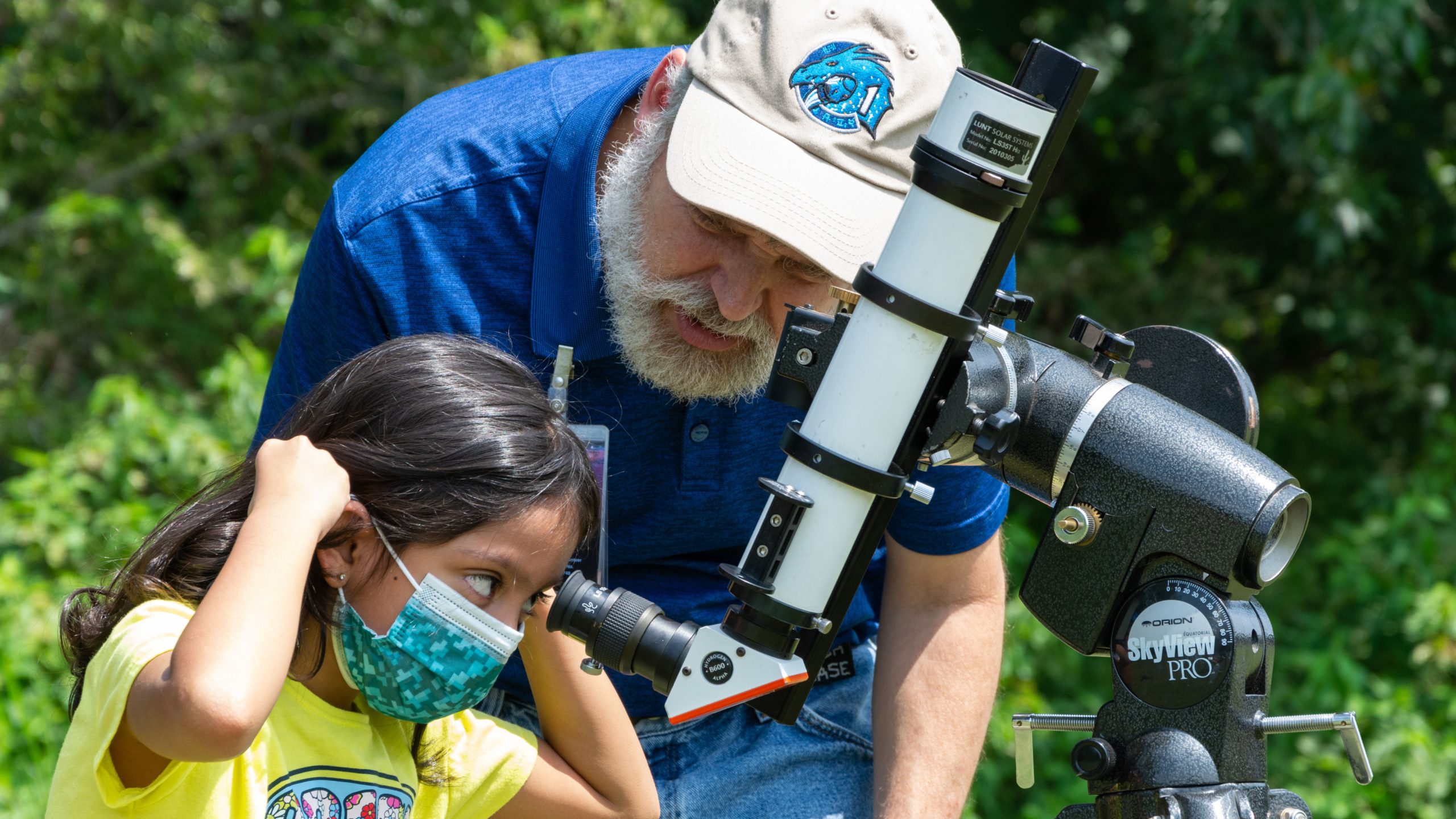
Plano Learns: Explore the Night Sky
Have you ever wondered what’s up in the sky? Join NASA Solar System Ambassador Les Murray at Parr Library on Monday, December 20 at 6 p.m. as he shares more about astronomy for all ages.
Solar System Ambassadors are motivated volunteers trained by NASA scientist, project managers and astronauts on NASA programs and missions. Les will share about what we can see in the night sky, and also answer your questions about space, the sky and NASA missions. You can even take a look through a powerful telescope to see Venus, Jupiter, Saturn, and Neptune. Seats are limited for this program, so be sure to arrive 30 minutes ahead of time to get your free ticket.
Can’t wait to learn more? Check out some of our library resources for all ages about exploring the night sky.

Junior Nonfiction
Night Sky by Howard Schneider
Provides a guide for beginning stargazers, including sky maps and constellation charts, identification tips, and space facts and jokes.
The Stars: A New Way to See Them by H.A. Rey
A simple guide to the location and recognition of stars and constellations presents the constellations in shapes that correspond sensibly to their names.
Sky Gazing: A Guide to the Moon, Sun, Planets, Stars, Eclipses, Constellations by Meg Thacher
With this highly visual guide to observing the sky with the naked eye, kids ages 9-14 will delve into the science behind what they see.
Star Finder! A Step-by-Step Guide to the Night Sky
A novel approach to stargazing, featuring step-by-step guides to identifying the key constellations across the northern hemisphere.
Adult Nonfiction
50 Things to See in the Sky by Sarah Barker
Astronomy for the amateur astronomer, with 50 illustrations to guide the user to astronomical patterns.
Backyard Guide to the Night Sky by Andrew Fazekas
Volume packed full of information that illuminates key astronomical concepts alongside the history and legends surrounding the stars and planets.
The Practical Astronomer by Will Gater
A complete introduction to observing and understanding the night sky, explaining and demystifying stargazing to recognize objects and explain how they move through the sky over the night and the year.
How to Read the Solar System: A Guide to the Stars and Planets by Chris North
This book looks at all the major players, including our more familiar neighbors – the Sun, the planets and their moons – the occasional visitors to our planet – asteroids, meteors and comets – as well as distant stars and what might be beyond our solar system.

STEAM Kits
Includes binoculars, a telescope, and books to learn more about the night sky.
Includes magnets, binoculars, space figures, and books to learn more about space.
Kanopy
Night Sky: Navigating the Constellations
This program describes the specific patterns of stars in the night sky. In compelling, easy-to-understand animations, students will be able to decode the constellations and other important celestial bodies. Ancient astronomers described how constellations might appear in different seasons in various parts of the world. This program also describes how many of the constellations, such as Orion, Leo, Taurus and Sagittarius were named.
For thousands of years, the star-filled sky has been a source of wonder, discovery, and entertainment. All you need to feel at home in its limitless expanse is Our Night Sky, a richly illustrated 12-episode course that gives you an unrivaled tour around the sky – all while teaching you about the science, technology, and pure pleasure of stargazing.




